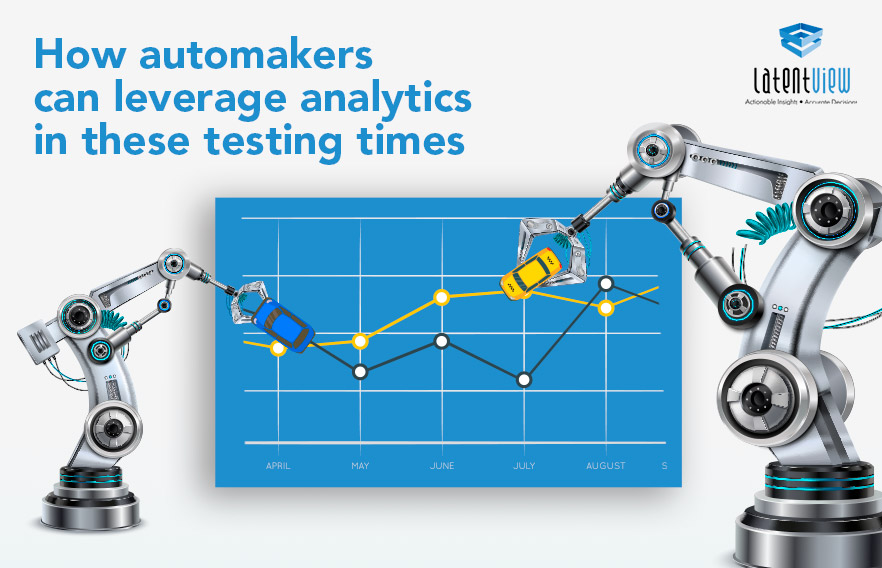The COVID-19 pandemic has had an immediate and serious impact on all industries across the globe. The automobile industry is essential for the global economy as it is an important component of economic growth with interconnections to upstream (e.g. steel, chemicals, textiles) and downstream (e.g. mobility services) industries. According to analysts at LMC Automotive, the number of vehicles sold across major global markets dipped to 90.3 million last year which is down from 94.4 million in 2018, and well below the record 95.2 million cars sold in 2017. With the auto-industry already facing a downshift globally, thanks to disruptions caused by the transformations in business strategies (viz – shared mobility etc) and the ever-evolving technology sector, the covid-19 pandemic has placed additional stress on the industry. However, things are no longer the same. Due to the pandemic, closure of assembly plants and the problem of supply and demand is a case to ponder upon for the leading manufacturers and they must rethink their business strategies once the current crisis starts to improve.
A lot of the potential risk of infection on public transport depends on how crowded they are, and how far away one can keep from other people. This applies both on the vehicles and at stops/stations. Not only will this affect public transport but also the shared mobility models.
Leveraging Analytics during the new normal
With social distancing becoming the new normal, we explore the role that analytics can play in understanding the buying pattern of the customer and how embracing Phygital model can help the automakers. One significant question to answer is whether personal mobility is the way forward.
With the apprehensions surrounding the current situation, in the period post the pandemic, analytics can be leveraged to decode if there is an increasing preference for personal mobility (new vehicles or pre-owned) to discover an equilibrium between the need to ensure safety and hygiene as well as sticking to their budget of buying cars. The sentiment of contemplating personal vehicles over public transport may indicate the growth of auto sales.
To unlock consumer behaviour, a mixture of both structured (e.g. survey) and unstructured (e.g. social media) data to understand drivers and associated attributes of consumption is the best possible approach.
Data analysis on the customer inquiry database of automakers and used car outlets as well as Survey and Social media analysis will help in understanding
1. the demand for vehicles (pre-owned or new),
2. the impact of economic slowdown on the vehicle budget, and
3. the target customers
As enormous amount of data will be available for the analysis, the increase/decrease in the trend of inquiries will be a useful factor to predict whether the sales will rebound shortly while the consumer sentiments & opinions can be captured through the other modes.
Unravelling the tech-savvy customer
Social media analytics can be an effective tool for companies as social data is likely to have notable insights hidden in them. It can help brands not only to sustain, but to thrive through direct consumer feedback. Marketing strategists segment people (individual or age-group) based on their psychographics for better performance of their campaigns. Social media empowers businesses to reach out to a large pool of potential customers which proves to be more productive than attracting customers to the business site. The biggest advantage of using analytics is to not depend on extensive field research or spend large amounts of money to reach customers.
Also, vast volumes of information on automobiles are generated each day by content creators such as journalists and bloggers worldwide. This provides contemporaneous view of the opinions and activities of individuals across the globe. This data may, for instance, allow for early detection of emerging opinions which could be of considerable value.
Furthermore, the movements of shares in the auto- industry can be utilized as an additional factor in understanding the public sentiments.
Finally, these results can be combined with business acumen to validate their relevance in terms of business requirements and make data-driven strategic decisions encompassing various aspects starting from financial options to buying experience.
Navigating the Digital shift – embracing PHYGITAL
Inquiries and sales are now held across multiple platforms – with digital gaining great traction – Embracing an integrated “Phygital” platform with a digitally-enabled agile salesforce (e.g. chatbots) will become a critical success criterion. As buyers in the world’s biggest auto market are gradually warming to the idea of buying online which has become an important part of the e-commerce experience, Successful automakers require expertise in internet marketing and not just manufacturing prowess to survive in the post-virus world.
Conclusion
The automakers could see the demand revival as a silver lining in the pandemic. The coronavirus outbreak may help in demand surge for personal mobility and is likely to reverse the declining sales trend. This could be the reality once the lockdown is lifted across countries. Furthermore, reactions to the globally challenging sales situation caused by this pandemic and the ability to flexibly adapt production volume to demand will be the one to watch out for.




